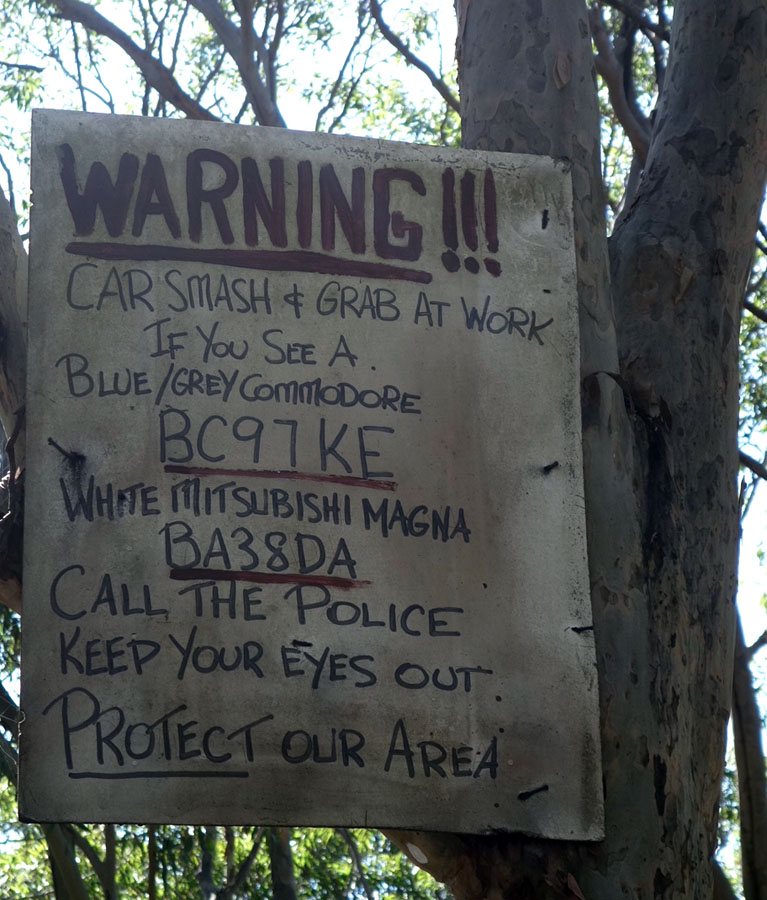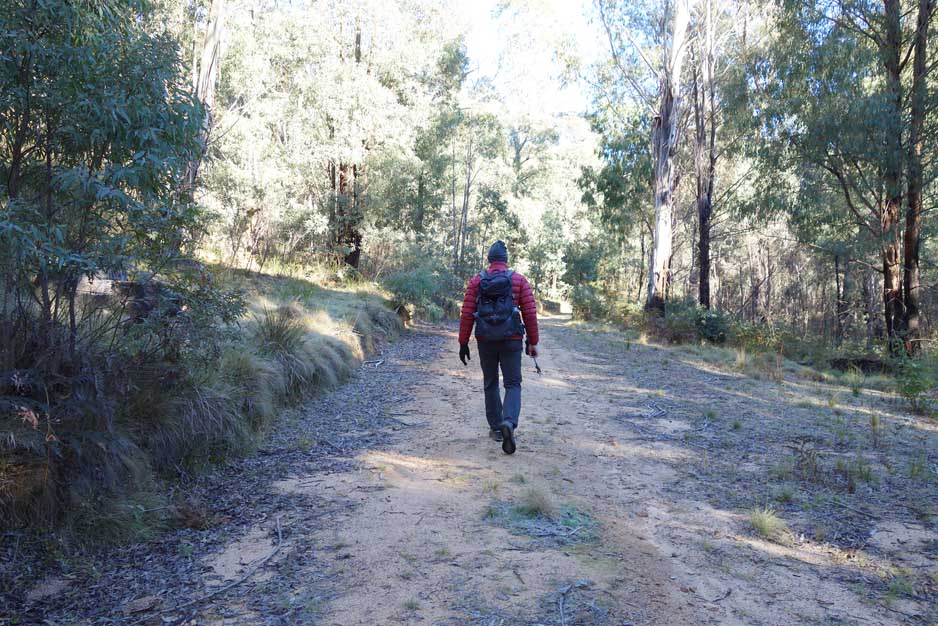Personal safety on the trail
Hiking practice
For hikers just starting out it seems like there is so much to worry about. Getting lost, snakes, will you be warm enough, can you walk the distance, and will you have enough to eat? While also these things need to be considered to ensure you have a safe enjoyable hike, to a great extent they are reasonably easy to manage with a bit of practice and development of on-trail skills.
A few weeks ago, we got a question of a different kind but one I commonly get asked or hear hikers talking about and this related to personal safety when hiking. The question we received consisted of two parts:
- The first related to vehicle safety with the worry of leaving your car at the trail head and coming back to a vandalized car
- The second part to this question related to personal physical safety.
In thinking about how to respond to this question I had to think back, way back, to my first overnight experience in a remote area and how I felt at the time so in answering peoples concern about safety here is our response.
To listen to this article as a podcast go here
Vehicle safety
Now I must admit that vehicle safety is a concern for me, but what may surprise you is that I worry more the closer to civilization I am. In a nutshell, my assumption is that criminals are generally lazy and while they will usually target vehicles in poorly lit remote areas they will not usually drive 40, 50 or 100km away from home to look for random unattended cars in the middle of nowhere. There are easier targets in suburban streets. If I’m camping close to city areas that has a mobile phone signal, I will have someone drop me off.
If you are going to leave a vehicle in an unattended area, consider the following:
- If you have a choice pick a more basic vehicle rather than an expensive one which implies that if there is anything inside its likely to be worth more
- Ensure the vehicle is locked and the windows are closed properly
- Remove any excess items out of your car particularly if they are valuable e.g. phones, wallets, cameras, sunglasses etc. If for whatever reason they are in the car, make sure they aren’t visible. Don’t leave your keys in the car
- If possible park away from access roads.

While not that common you will occasionally see warning signs like this that that advise of theft

Leaving a wallet on the dashboard is inviting theft
Personal safety
Now I’m going to broaden the question here and in discuss issues with animals, specifically wild dogs, as well as issues with people. But firstly, why do we feel unsafe on the trail when hiking particularly overnight as opposed to when we are at home? There is such a thing as first night syndrome which is a throwback to caveman days where our brain keeps an eye out on our safety. All those strange noises, the different environment keeps our brain on edge and as a result we don’t sleep as well as we do when we are at home.
Animals (Wild dogs)
I do a lot of camping in the Namadgi National Park near Canberra (Australia). The Australian Alps Walking Track (AAWT) starts/finishes in this park and there is a pack of Dingoes / wild dogs that roam this part of the park area. Encounters with wild dogs are extremely rare but I can remember being in Namadgi about nine years ago and had the local pack very close by making a lot of noise and as a result I wasn’t feeling very comfortable.
While I can’t remember any reports of negative interactions in the park; when its pitch black, you’re alone and there’s a pack of noisy wild dogs close by its very unnerving. Our responsible local Government agency recommends the following advice if you feel threatened by a wild dog(s):
- Stand up at your full height
- Face the dog;
- Fold your arms and keep eye contact
- Slowly back away.
To minimise issues, keep your food waste contained, and keep an eye on small children and walk in groups in areas where dogs are possible issues. Mmmm so much for solo hiking in that area.
Animals (People)
For most people one of the biggest concerns is coming across other people on the trail particularly when you are travelling by yourself. From what we have seen on our multiday hikes over the past few years, male solo hikers greatly out number females and typically we will see females travelling in groups of various sizes. Now this is not to say that hiking for females is not safe but from a societal perspective they tend to be more aware of their surroundings than males. They are more ‘situationally aware’.
Situational awareness is a strange term I know to relate to hiking, but it concerns being aware of what is happening around you in terms of where you are, where you are supposed to be, and whether anyone or anything around you is a threat to your health and safety. Our knowledge, experience and skills enable us to understand what is going on around us and helps us to determine if it is safe.
From our own experiences you will come across all sorts of people while out hiking and hikers are representative of the broader community. As a generalisation the people we meet on the trail are a pretty nice bunch. Don’t get me wrong there are some real nuts on the trail, but I say that in the nicest possible way. They are into what they are doing and will happily talk your ear off as I’m sure you will with them about your mutual experiences on the trail, other walks and most importantly gear. Does that describe you as well?
We find other hikers are usually willing to help out if there are any issues. It takes a certain type of person to wander into the middle of nowhere and typically that means the good type.
The thing to remember here is that the other person is probably eyeing you off thinking what sort of person you are. If you’re reading this article you are aware Gill and I blog, and from my perspective I find it much easier to strike up a conversation and interview people, particularly females, with Gill around because people perceive me as being less of a threat because my wife is with me. When I’m travelling alone, I present differently being a large male, so I am very conscious of how I approach people, in particular single females, so as not to come across as a threat. I am also conscious of not badgering people who are out to enjoy themselves.

There’s nothing wrong with solo hiking from a safety perspective providing you pay attention
Final words
What it comes down to is that there are no guarantees in life and however unlikely, however rare, personal safety issues relating to you or your vehicle can, and do occur. Regardless of whether you are a male or a female, if you don’t feel comfortable in a situation do what you can to remove yourself from the situation. And don’t forget that how others perceive you may not be how you see yourself.
The main thing is to just enjoy yourself and realise that everyone is different but overall hikers are a great bunch of people!